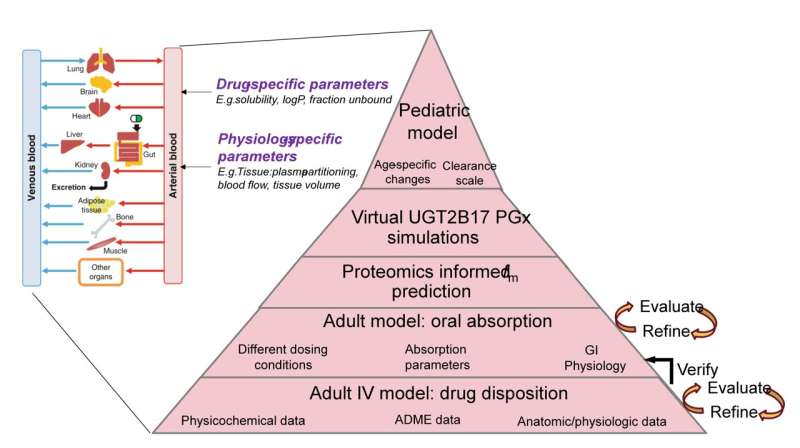This article has been reviewed according to Science X's editorial process and policies. Editors have highlighted the following attributes while ensuring the content's credibility:
fact-checked
trusted source
proofread
Study points to cause of safety concerns in widely used painkiller diclofenac

Safety concerns related to the widely used painkiller diclofenac may be tied to a little-studied drug-metabolizing enzyme whose expression can vary as much as 3,000 times from one individual to the next, according to new research.
Published in the journal Clinical Pharmacology & Therapeutics, findings from the study could be used to develop ways to identify individuals at risk of serious side effects from diclofenac and to determine safer dosing standards for specific populations, including women, young children and people of certain ethnicities.
Used to combat pain and inflammation associated with arthritis, diclofenac was available in the U.S. as an over-the-counter drug until 2013, when the Food and Drug Administration restricted it to prescription-only use following reports of the drug causing heart damage. More than 10 million prescriptions per year are written for it in the U.S. It is also one of the most widely used non-steroidal anti-inflammatory drugs worldwide. This includes many countries in Asia, Africa and the Middle East that still allow over-the-counter use of diclofenac.
"Most patients who are using diclofenac have arthritis, and many of them are at risk of heart disease," senior author Bhagwat Prasad, an associate professor in the Washington State University College of Pharmacy and Pharmaceutical Sciences. "So there is a concern that taking diclofenac may be putting them at even greater risk of cardiovascular events such as heart attack and stroke."
Previous findings by the WSU team had found a high degree of variability in the expression of UGT2B17, an enzyme that is a known player in diclofenac metabolism. That study showed that the enzyme is present at much lower levels in women than in men, which the researchers thought could explain the increased risk of heart damage seen in women taking diclofenac.
They also found that the enzyme is mostly absent in children under the age of nine and discovered large ethnicity-based differences in the number of people who lack the gene for the enzyme altogether, which ranges from around 20% of Caucasians up to around 90% of Japanese people.
In this new study, the WSU researchers used human liver and intestinal samples along with computer-based modeling to quantify the degree to which this enzyme contributes to diclofenac metabolism relative to other related enzymes. They found it to be a major player, supporting the idea that low levels of the UGT2B17 enzyme may be the cause of heart damage tied to diclofenac use.
"No one knew why this heart toxicity is happening in some individuals," said first author Deepak Ahire, a graduate student in the WSU College of Pharmacy and Pharmaceutical Sciences. "Our study showed, for the first time, that UGT2B17 is important in diclofenac metabolism and suggests that differences in UGT2B17 expression are what makes people's response to diclofenac so variable, leading to toxicity in some whereas for others the drug simply does not work."
Ahire said that their study found that this enzyme metabolizes diclofenac mainly in the intestine, unlike other related enzymes that are active mostly in the liver. As a result, the effect the researchers are seeing is specific to diclofenac tablets taken by mouth, which provides for the quickest absorption and pain relief. Just under half of prescriptions written for the drug in the U.S. are for oral diclofenac, Prasad said.
The researchers' findings suggest that it may be feasible to use genetic testing to help healthcare providers evaluate safety risks before prescribing diclofenac. Prasad also noted that drug regulatory authorities in countries where diclofenac is still available over the counter should consider doing efficacy testing to determine the optimal dose of the drug for their local market.
The WSU researchers are currently in the process of confirming their findings in a pilot clinical trial. Their next step would be to pursue collaborations with large hospitals to study the connection between diclofenac and heart damage in patients' electronic medical records.
More information: Deepak Ahire et al, Intestinal metabolism of diclofenac by polymorphic UGT2B17 correlates with its highly variable pharmacokinetics and safety across populations, Clinical Pharmacology & Therapeutics (2023). DOI: 10.1002/cpt.2907





















